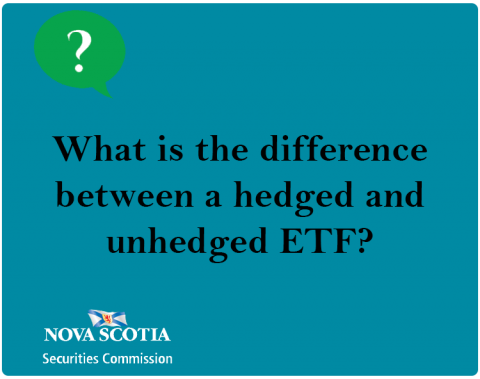Submitted by nsscadmin on

This question came from an investor that was interested in investing in an ETF, but didn’t know whether to go with hedged or unhedged because they didn’t know the difference between the two
Let’s use this investor as an example to better explain the difference between hedged and unhedged ETFs. Our investor is a Canadian that resides in Nova Scotia. This means they invest using Canadian dollars. They are interested in an ETF that tracks the S&P 500, which is an American stock index. There are both hedged and unhedged ETF’s available to them to invest in this index.
When investing in foreign ETFs, like the S&P 500 ETF in our example, you are investing in securities priced in that country’s currency, which in this case would be US dollars. Investing in a hedged ETF is a way to manage currency risk which we mentioned in our previous blog posts on market risk and foreign investment risk.
In a hedged ETF the ETF issuer has purchased the underlying assets in their home currency (US dollars). In order to price the ETFs assets in your currency (Canadian dollars), the ETF issuers uses a foreign exchange rate. To hedge the foreign exchange rate volatility, the ETF manager will enter into a derivatives contract..
An unhedged ETF does not use a derivate contract to mitigate foreign exchange fluctuations. For example, an unhedged ETF that tracks the S&P 500 would could be subject to currency fluctuations between the US dollar and Canadian dollar.
To understand how an ETF hedges its currency exposure, you should review the ETF facts and prospectus.
There is no one answer to the question should you purchase a hedged or unhedged ETF. One may be better for you than the other depending on your risk tolerance, time horizon, and overall financial situation. Be sure to discuss with your financial adviser why a hedged or unhedged ETF may be better for you before making any investment decision.
